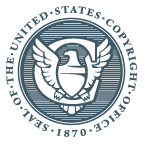
 The Copyright Committee (formerly known as the Copyright and Fair Use Advisory Group) monitors copyright law, recommends changes to College policy and procedure as appropriate, and provides general guidance to College employees and students regarding copyright and fair use. To contact us, send email to: copyright@pct.edu
The Copyright Committee (formerly known as the Copyright and Fair Use Advisory Group) monitors copyright law, recommends changes to College policy and procedure as appropriate, and provides general guidance to College employees and students regarding copyright and fair use. To contact us, send email to: copyright@pct.edu
This site provides resources to learn more about copyright and fair use, as well as tools for determining appropriate use, a form for requesting copyright permission, and links to official College Policies & Procedures relating to copyright.
The information contained on this site regarding the protection of works by copyright or Creative Commons is in no way intended to supersede Pennsylvania College of Technology policies and procedures.
Committee Members |
|
|
|---|---|---|
|
|
|
|
|
|
|
|
|
|
|
|
|
Copyright is a form of protection provided by the laws of the United States for "original works of authorship" including literary, dramatic, musical, architectural, cartographic, choreographic, pantomimic, pictorial, graphic, sculptural, and audiovisual creations.
"Copyright" literally means the right to copy, but has come to mean that body of exclusive rights granted by law to copyright owners for protection of their work.

Creative Commons (CC) is a licensing option that allows creators of intellectual property to retain the rights of ownership while specifying how their materials can be used by others. These works may be used based upon the particular terms of the licensing agreement specified by the creator: attribution, non-commercial, no derivatives, or share alike. Public domain refers to works that are not protected by copyright law and are free to use without permission.
Fair Use is the doctrine for which the reproduction of a particular work may be considered fair, such as criticism, comment, news reporting, teaching, scholarship, and research. Section 107 of the U.S. Copyright Law sets out four factors to be considered in determining whether or not a particular use is fair:
The distinction between fair use and copyright infringement may be unclear and not easily defined. There is no specific number of words, lines, or notes that may safely be taken without permission.
Acknowledging the source of the copyrighted material does not substitute for obtaining permission.
The safest course is always to get permission from the copyright owner before using copyrighted material.
When it is impracticable to obtain permission, use of copyrighted material should be avoided unless the doctrine of fair use would clearly apply to the situation.
The College defines Plagiarism as the presenting of another’s words, ideas, or projects as one's original work. To draw upon another's work; to copy out passages (even as short as a sentence) verbatim or with small changes; to use as original another's ideas, interpretations, striking terms or phrases; to paraphrase; or to summarize without acknowledging the source - these require acknowledgement (i.e., footnotes or other citations giving adequate description of the source of materials and clearly indicating all quotations either by quotation marks or by otherwise setting off the quoted passage).
The most common forms of student plagiarism, whether deliberate or not, are the following:
The Technology, Education, and Copyright Harmonization (TEACH) Act facilitates and enables the performance and display of copyrighted materials for distance education by accredited, non-profit educational institutions (and some government entities) that meet the TEACH Act’s qualifying requirements:
Numbered documents (P and PR) are internal, housed on the myPCT Portal, and available for the use of Penn College students, faculty, and staff only.
If you can't find an answer to your question on our site or in the FAQs below, feel free to e-mail us. We will do our best to answer your questions within one or two business days, and incorporate the responses into this site.
Disclaimer: The Copyright Committee members are not copyright lawyers and cannot give legal advice. Any copyright-related advice provided by the committee is based on research and experience.
The first five tools come from the Copyright Advisory Network, American Library Association, Office for Information Technology Policy: